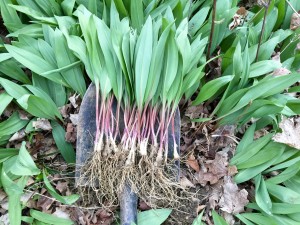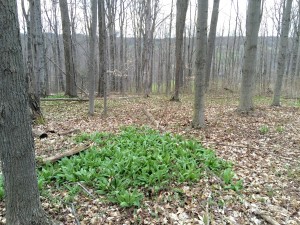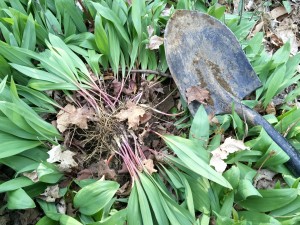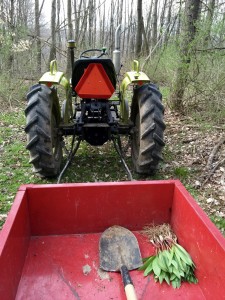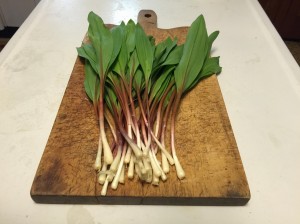Ramps
Ramps (also called wild leeks) (Allium tricoccum) are a forest plant which grows in “patches” in the eastern United States. Our ramps grow in the mainly deciduous forest of western NY state. The ramps are in the onion family and taste similar to cultivated onions and garlic. We are fortunate to have them growing on our property, however we only harvest a few every couple years. They are really a novelty, in our opinion, for culinary use. This year we incorporated them into venison cheeseburgers and they were quite good. Some gourmet celebrity chefs could probably convince you they were the best tasting thing since Kale, but it is basically just a wild onion, and tastes like an onion.
We do enjoy seeing them grow in our forest, and we are glad they are a continuing part of our environment. They flower and go to seed shortly after they pop up in the spring. Then they go dormant, die back, and disappear from the forest floor until the following Spring, when they reappear. We believe mother nature has timed their life cycle this way because they come up before the leaves are on the trees, take advantage of the sunlight, and then go dormant after the trees are in full foliage. The spring is usually a damp time of year and the summer can be dry so the ramps survive this way by being dormant when the soil is dry and the other forest trees suck up all the available moisture. Energy and moisture is saved in the onion like bulb.
The ramps reproduce from seeds. The plant flowers in the early summer by sending up a leafless flower stalk. After the foliage has gone dormant, the plant flowers and seeds develop, falling near the mother plant later in the summer. Not every plant will flower. The seeds germinate when conditions are right in late summer or early fall. Not all the seeds will germinate and live.
This year we were lucky and the soil was quite dry when we dug our ramps. The soil crumbled away from the roots easily after we dug one shovel full. We separated the soil so it would stay in the woods. We tried to cut the roots off, but it seemed easier to just “snap” them off. A single ramp plant can be many years old and develop a root “stub” which is relatively easy to snap off.
Since the ramps are quite a way out in the woods we took our tractor and wagon to go harvest the ramps. Now we are ready to take them back to the house and the kitchen where we will prepare them to eat.
If you should happen to go out to the forest to harvest some ramps, please remember this is a wild plant treasure that does not reproduce easily. It is important not to harvest more than 30% of the “patch”. That way you will always leave more than you take. Not every year is a good growing year for the ramps so it is important that you leave enough so the patch can continue to grow. If you want to make the effort to go back to the patch in late summer to harvest seeds and plant them, you may be able to start another patch in another spot in the forest. In some locations the ramps are being over harvested and are in danger of being eliminated from their home range. Harvest sustainably!!
